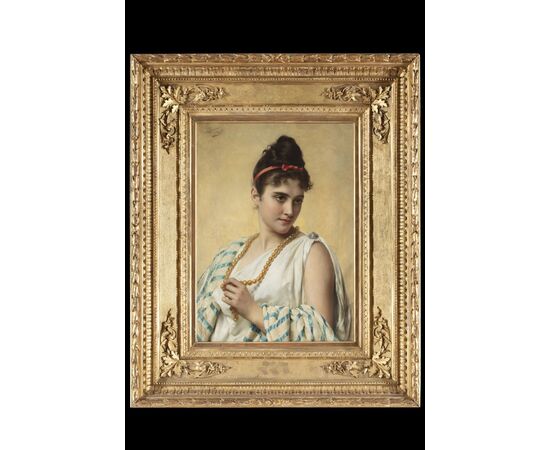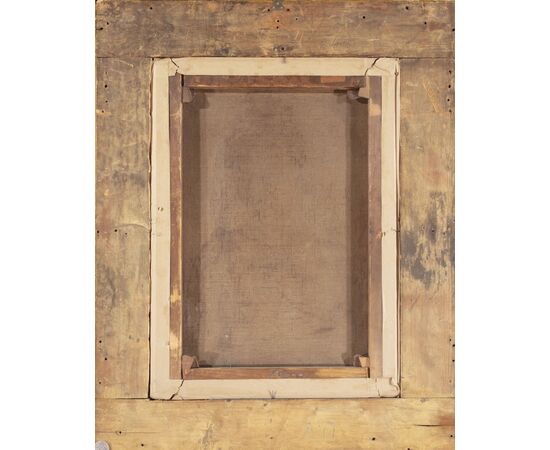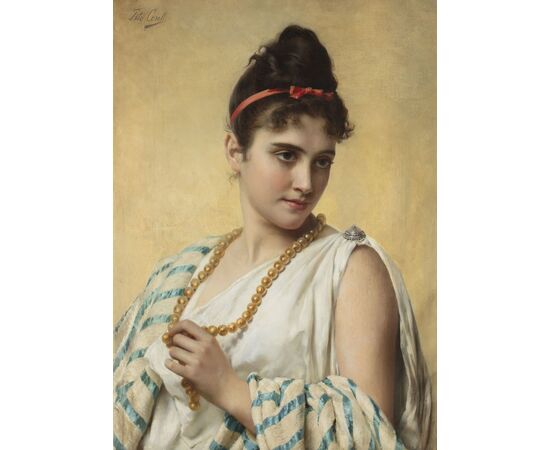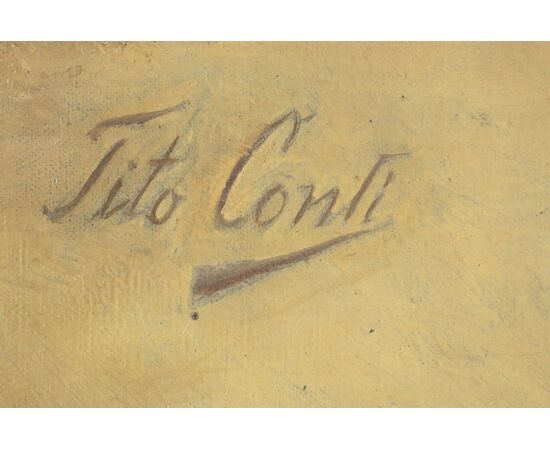Painting by Tito Conti (Florence 1842 - 1924), “The Pearl Necklace”
Tito Conti (Florence 1842 - 1924), “The Pearl Necklace”, circa 1880.
Oil on canvas, cm. 105.5 x 83
Signed “Tito Conti” at the top left. Contemporary frame.
The young woman in the painting, portrayed in three-quarter view, wears clothes inspired by Roman garments; a silver brooch in the shape of a shield, made in the late antique style, binds the two edges of the stole on her shoulder. On her left and right arm rests the palla, a cloak typically worn by matrons, in this case made of thick silk and with a striped pattern. We can find the presence of this fabric, probably a stage costume that the painter had in his studio, also in other works such as An Italian Beauty, Portrait of a Young Italian Woman, and the exotic Odalisque.
The blue of the stripes creates a harmonious contrast with the yellow undertone of the entire composition as the two colors are diametrically opposed on the color wheel.
The girl's dark eyes and hair are highlighted by a light and uniform background.
Her gaze is intense and thoughtful, and meanwhile, she is playing with her fingers with her necklace of golden pearls, probably from the Pacific Ocean.
BIOGRAPHY
Tito Conti was born in Florence in 1842. From 1855 he studied at the Academy of Fine Arts in Florence; he made his debut at the National Exhibition held in Florence in 1861 with a historical painting dedicated to Christopher Columbus.
He participated in the Florentine Promotrici in the following years, presenting works always of a historical nature inspired by the life of Dante Alighieri. Towards the end of the 1860s, Conti, influenced by pictorial novelties, began to paint genre scenes such as The Calends of May in Florence, a work he presented in Turin in 1868, The Presentation, and The Proposal. He became a professor at the Academy of his native city and Arturo Ricci was among his students. In 1886 he created A Half Figure of a Woman for a charity sale.
Subsequently, he was entrusted with the restoration of the faces of the Madonna di Casale, a tempera painting on wood from the early 13th century. The work, already heavily repainted in the mid-eighteenth century, was restored in the 1980s, removing Conti's reworking and restoring the work to its original appearance.
The artist's fame is, however, due to his portraits, commissioned by exponents of high Tuscan society; Conti's painting, characterized by an almost transparent application of color, as well as soft and refined tones, was the favorite of noble Florentine women, who sometimes had themselves portrayed in historical clothes, as demonstrated by the various versions of An Italian Beauty (1880) and The Reading. A period of absence from exhibitions and displays followed, then interrupted in 1907 with his participation in Florence with some female Nudes. He died in 1924.








